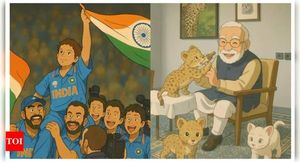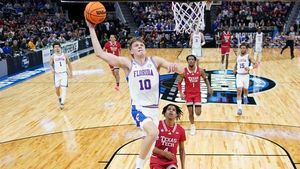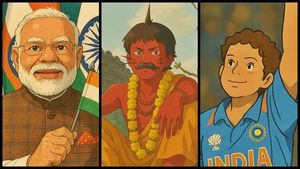In recent days, the popularity of Studio Ghibli-themed meme coins has surged on the social media platform X, largely attributed to the influence of billionaire Elon Musk. This trend has prompted Binance Alpha to list two new meme coins inspired by the beloved animation studio: Ghiblification (Ghibli) and GhibliCZ (Ghibli). The excitement surrounding these coins reflects a growing intersection of pop culture and cryptocurrency.
According to reports, Ghiblification has seen its market capitalization skyrocket from $17 million to $37 million, marking an impressive increase of approximately 120%. Meanwhile, GhibliCZ, which is paired with Binance's BNB, quickly reached a market cap of $15 million within just a few hours of its launch. This rapid growth illustrates the meme coin's ability to capture the interest of investors and the crypto community.
Data from Dexscreener indicates that buying orders for Ghiblification are outpacing selling orders, suggesting a rising confidence among investors. The meme coin trend has been bolstered by viral images created in the style of Studio Ghibli, which have taken social media by storm. The phenomenon began with AI-generated images that rapidly gained traction online, drawing attention from celebrities, including CZ, the founder of Binance, who shared his own Ghibli-style image with a humorous caption about profile pictures.
As the popularity of these meme coins continues to grow, many are curious about the distinction between Binance Alpha and the main Binance Exchange. Binance Alpha serves as a platform for early-stage crypto projects, allowing users to access new coins with high growth potential before they hit the main exchange. However, it is important to note that tokens listed on Binance Alpha have not undergone the same rigorous scrutiny as those on the main exchange, resulting in higher risks and price volatility.
In a related development, OpenAI recently announced a temporary suspension of the free image generation feature in ChatGPT, following the viral trend of creating images in the distinctive style of Studio Ghibli. This decision comes just one day after the launch of a powerful new feature that integrates the capabilities of the GPT-4o model, allowing users to generate images with remarkable accuracy. The excitement surrounding this feature quickly turned into concern for OpenAI, as the Ghibli-style images began to dominate social media.
Sam Altman, the CEO of OpenAI, expressed interest in changing his profile picture on social media to a Ghibli-style version of himself. However, the company decided to delay the rollout of this feature for free ChatGPT users, labeling it as a “temporary” measure. While users who subscribe to paid plans like Plus, Pro, and Team can still access the feature, the suspension raises questions about the ethical and legal implications of AI-generated content.
The legal landscape surrounding the imitation of artistic styles, such as those of Studio Ghibli, is complex. Intellectual property attorney Evan Brown noted that mimicking a studio's style does not necessarily constitute copyright infringement, as copyright law does not explicitly protect artistic styles. However, the situation remains in a legal gray area, prompting OpenAI to act cautiously in response to potential risks.
OpenAI asserts that its tools can replicate the style of film studios but cannot mimic individual artists' styles. The decision to halt the free image generation feature reflects the company's attempt to navigate the challenges posed by the evolving landscape of AI technology and its creative applications.
This scenario is not unique. In late 2023, Funko Pop! announced that AI-generated characters would be available at lower costs, highlighting the growing trend of AI in the creative industry. Similarly, Microsoft’s AI capabilities have gained traction but come with guidelines to prevent users from generating inappropriate images.
As AI technology continues to advance, the balance between fostering user creativity and managing unintended consequences surrounding copyright, ethics, and technology misuse remains a pressing challenge. The recent developments surrounding Studio Ghibli-themed meme coins and AI-generated images underscore the dynamic interplay between pop culture and the cryptocurrency market, while also raising important questions about the future of creative expression in the digital age.
In conclusion, the intersection of Studio Ghibli's iconic style with the burgeoning world of cryptocurrency illustrates the fascinating ways in which cultural phenomena can influence financial markets. The rapid rise of Ghibli-themed meme coins demonstrates the power of social media and celebrity endorsements in shaping investor behavior, while the temporary suspension of OpenAI's image generation feature highlights the ethical considerations that come with technological innovation. As these trends continue to evolve, they will undoubtedly spark further discussions about the implications for creators, investors, and technology companies alike.





